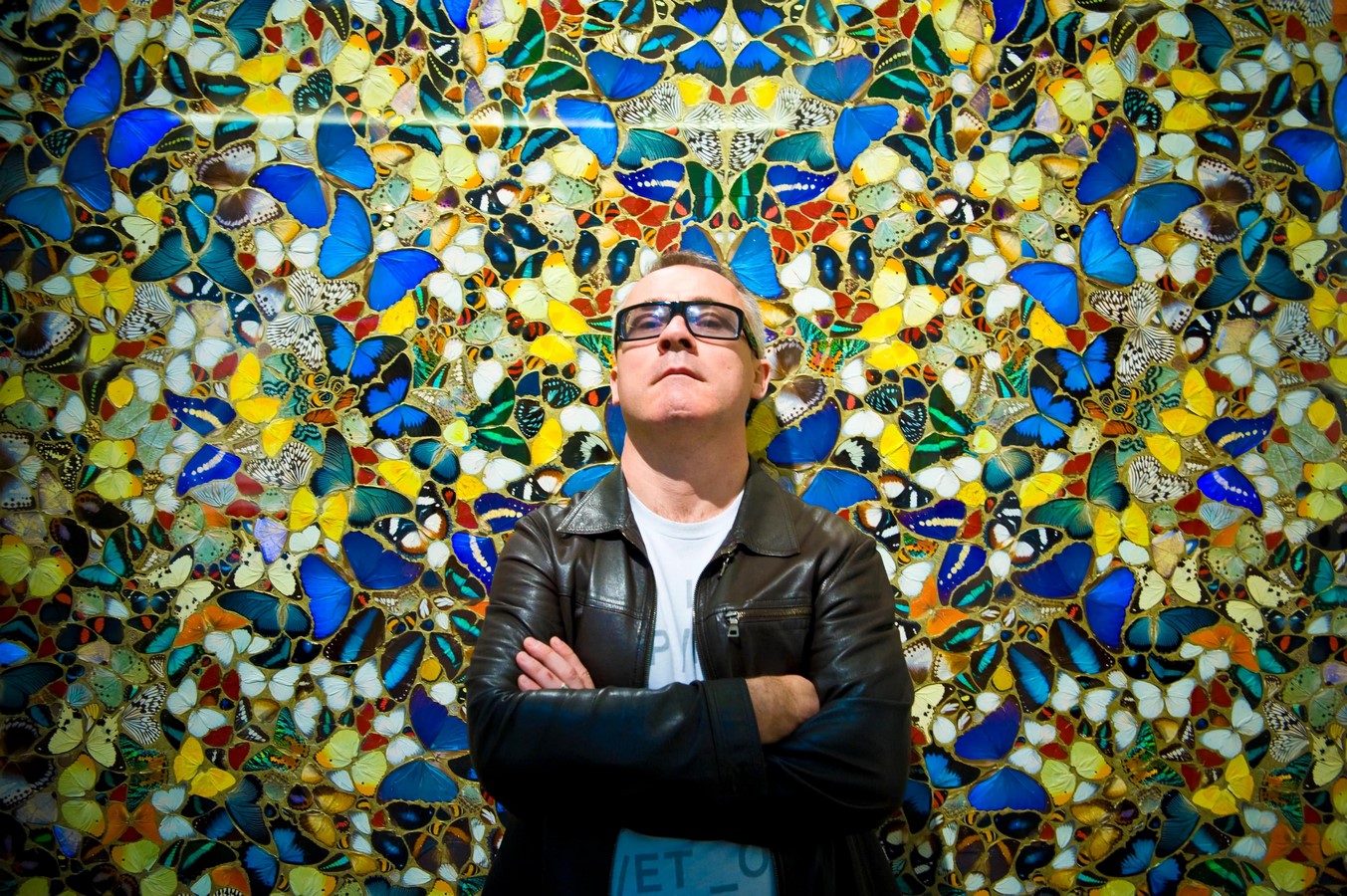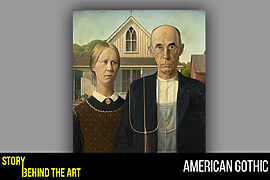One of the most recognized and notorious artists of the 1980s is the poster boy Damien Hirst of the Young British Artists. He stands as an artist constantly challenging the boundaries of fine art and conventional aesthetics. His works revolved around sculptures featuring deceased animals preserved in formaldehyde and a vast array of spot paintings that seemingly resemble mass-produced pieces, yet remarkably fetch millions of dollars in the art market.
Overview
Damien Steven Hirst was born in Bristol England, on June 7th, 1965. He is a contemporary English artist renowned for his provocative and controversial works of art. Hirst has curated over 90 solo exhibitions since 1987 and has participated in over 300 group exhibitions worldwide.
Growing up, Hirst had a convoluted relationship with art and paintings and would consider giving up on painting by the time he turned 16. He emerged as a prominent figure among the Young British Artists (YBAs) in the late 1980s and early 1990s. Hirst attended Goldsmith, University of London, where he pursued fine arts and gained fame for his unique and audacious approach to art. His artworks deliberately centre on provocative themes that address vanitas and beauty, death and rebirth, and intersections of medicine, technology, and mortality. Hirst shot to fame during the 1990s with the aid of Charles Saatchi, a business tycoon who saw the potential in Hirst’s works revolving around rotten animal bodies. He continues to live and work in London and Gloucestershire.

Concept and Philosophy of Hirst:
Central to Hirst’s philosophy is the “memento mori”, a Latin phrase that translates to “remember you must die”. He explored concepts of mortality, the human conditions, and the inevitable truth of death through his art. Throughout his career, Hirst has been driven by a desire that arises from challenging the conventions of life and death. A fascination with mortality, science, and the fragility of existence characterizes his art. Raised as a Catholic, Hirst states that the Madonna and Child and Death of Christ are key elements influencing his aesthetics.
Most of Damien Hirst’s artworks are a tribute to the 19th– century art movement of Impressionism movement and the modern century movement of Expressionism.
Medium of Expression and Workstyle:
As mentioned earlier, Hirst’s artistic style is eclectic and diverse, ranging from installations, sculptures, paintings, and drawings to more unconventional art forms. Perhaps he is best known for his “Natural History” installations series, featuring preserved animals in formaldehyde-filled tanks.

One of his notable works on these concepts is from the series titled The Physical Impossibility of Death in Mind of Someone Living (1991), which showcases a massive tiger shark preserved in formaldehyde.
Apart from Hirst’s fascination with the preservation of animals and death, he has gained a reputation for Spot Painting – a series that started in the late 1980s. Each painting in the series contains grids of vibrant-hued spots meticulously arranged on the canvas. The spots appear machine-made owing to the precision of the spots. Artworks like Spot Paintings establish his work style as a subtle expression of human imperfections although the art looks mass-produced.
As he continued to progress in his career, Hirst started to integrate the themes of pharmaceuticals and medicine into a series named Pharmacy. The series studies themes on consumerism and the dependence of societies on medication. Featuring pill cabinets and sculptures, the art sculptures question the interlapping boundaries of science and art.
Influence on Contemporary Art:
Recent artworks by Hirst employ the technology of spin machines and anatomical models of the human body. One of his most recognized pieces is For The Love of God – a human skull plated with diamond studs.
Damien Hirst has deeply influenced modern art practices with his unconventional style of work. His daring approach to art has often sparked debates and controversies. While a section of critics perceive his art as controversial, with arguments stating that the art sculptures are nothing but attention-seeking stunts, others view him as a master of breaking the rules of what art conventionally is. The immense commercial success of Hirst’s artworks has also redefined the art market, with some of his pieces selling for astronomical sums in British auctions. The usage of dead animals and preserved organisms has led to questions regarding the commodification of art and the role of money in determining artistic value.
Nevertheless, Damien Hirst ensures his art forces his audience to face the unfathomable truths about mortality, morale, and ethics. He continues to be infamous for challenging artistry norms and redefining creative boundaries. His work style and philosophy invite viewers to question their faith, morality and the value and meaning of contemporary art in the 21st century.
Whether through a diamond-studded human skull, a pill cabinet or preserved animals, Damien Hirst continues to provoke thoughts and emotions and stimulate dialogue within and beyond.




















